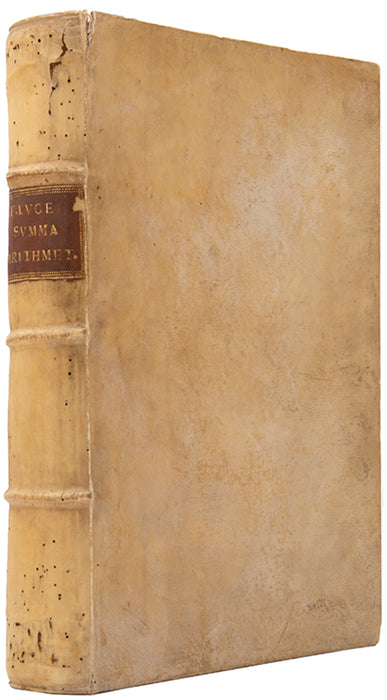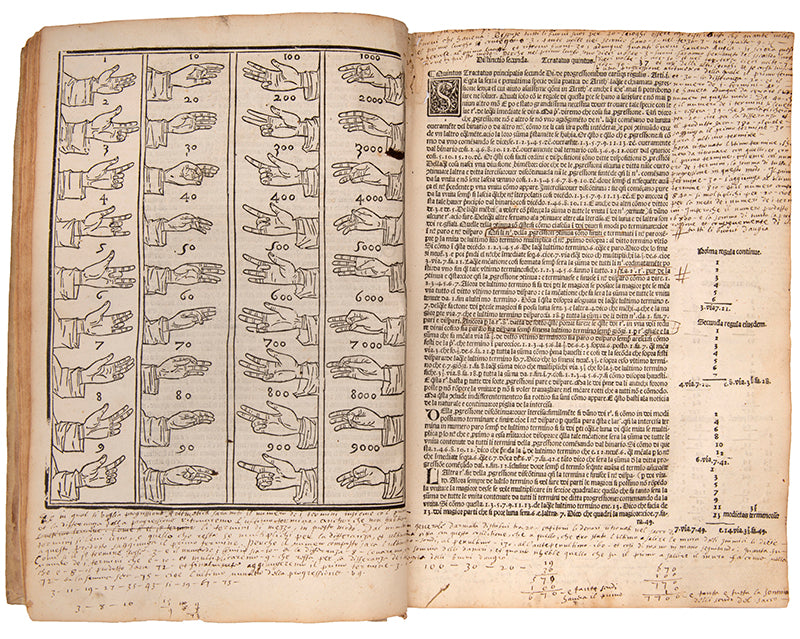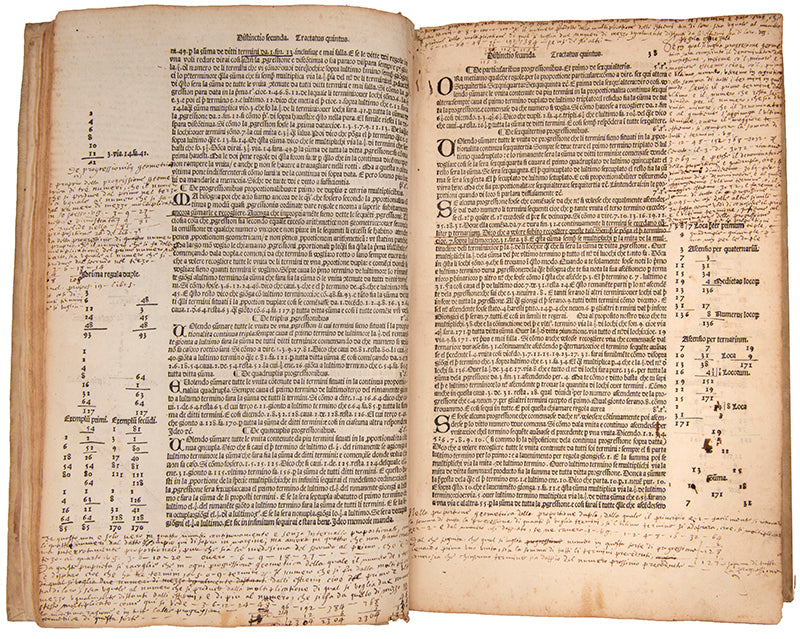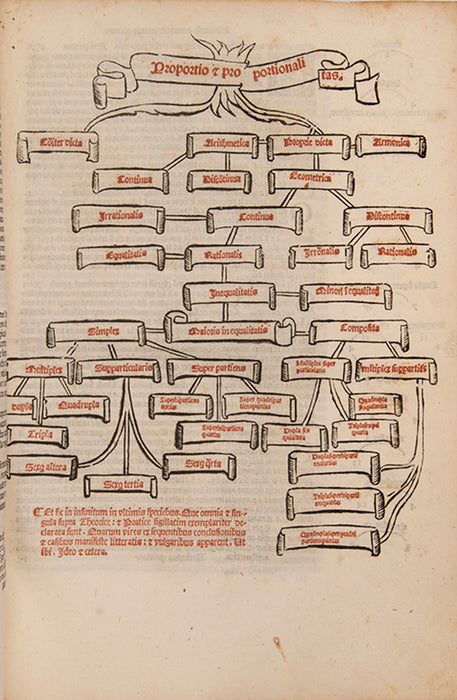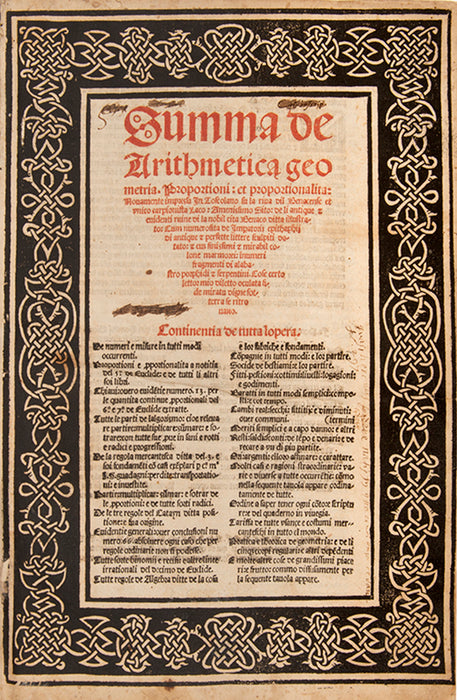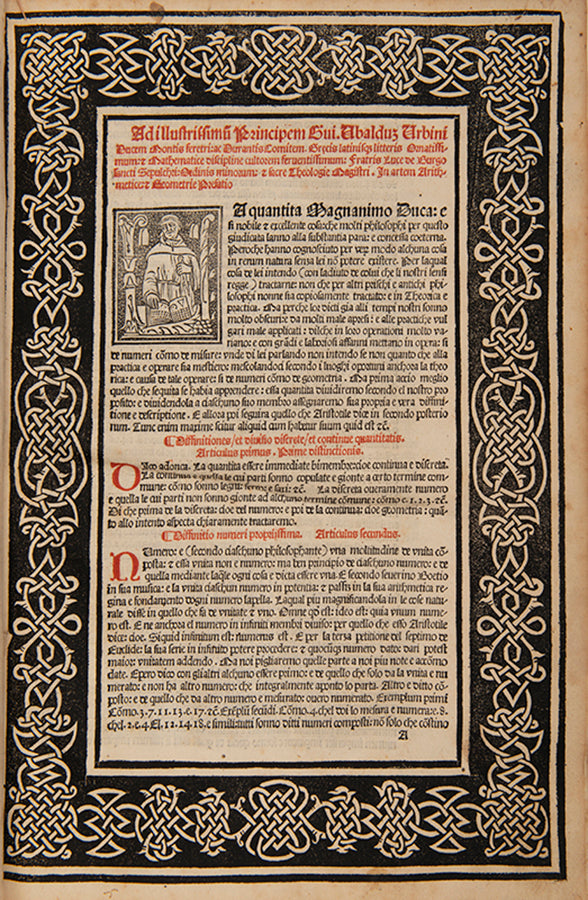
Summa de arithmetica.
Toscolano, Paganino Paganini, 1523
The Summa, the writing of which had been completed by 1487, is in two volumes, the first dealing with arithmetic and algebra, the second with geometry. The first volume is divided into nine chapters (distinctiones): the first seven on arithmetic (222 pages), chapter 8 on algebra (78 pages), and chapter 9 on business (150 pages). The second volume comprises chapters 1-8 (151 pages) on geometry, with separate signatures and foliation and a caption title. There is a brief colophon at the end of part 1 referring to the full colophon at the end of part 2.
The first part of the Summa is the first printed comprehensive treatment of algebra and arithmetic, based largely on Fibonacci's 1202 Liber Abaci which famously introduced Arabic numbers to the West, and which was itself in part a translation of the treatises on algebra and arithmetic of the Persian mathematician and astronomer Muhammad ibn Mūsā al-Khwārizmī (c. 780-c. 850) (the word algorithm derives from his name). The second part, on geometry, is based on Fibonacci's Practica Geometriae, but includes at the end a section on stereometric geometry and regular solids taken from the Trattato d'abaco of Piero della Francesca. The business section also introduces the 'rule of 72' for predicting an investment's future value, anticipating the development of the logarithm by more than a century.
The Summa was central to the thinking of Leonardo da Vinci (1452-1519). Pacioli came to Milan where he held the chair of mathematics from 1496 to 1499, during which years he lodged with Leonardo, and taught him mathematics. Leonardo owned a copy of the first edition of the Summa and refers to it in his notebooks.
Second edition; 2 vols in one, folio (30.8 x 20.8 cm); title printed in red and black within a woodcut strapwork border, white on black woodcut initials (including a portrait of the author on A1), woodcut diagrams and illustrations throughout, L2r with full-page woodcut diagram with red printing, frontispiece with partially erased annotations, small tear to right-hand margin on frontispiece and a stain of acid ink puncturing the paper at the bottom of the frame, E4v-E6r with extensive marginal annotations, text underlined and annotated throughout (not affecting legibility of text), S3 with obvious oxidation spots that do not disturb the text, evidence of wormholes, occasional creasing of pages, marginal spotting, very occasional marginal dampstains; 18th-century full vellum, red title piece on spine with gilt border and lettering, warping to upper board, wormholes on boards and spine, some soiling to boards, corners slightly rubbed; [8], [1], 2-224; 76pp.
Adams P 8; Edit16 28198; Goldsmiths-Kress 15; Honeyman 2380; Mortimer, Harvard (Italian), 347; Riccardi II, 227/228; Sander 5367; Tomash & Williams P2; USTC 846002.
Provenance
Delivery
We offer secure and express delivery on all local and international orders of rare books, maps and prints placed through this website.






